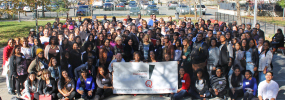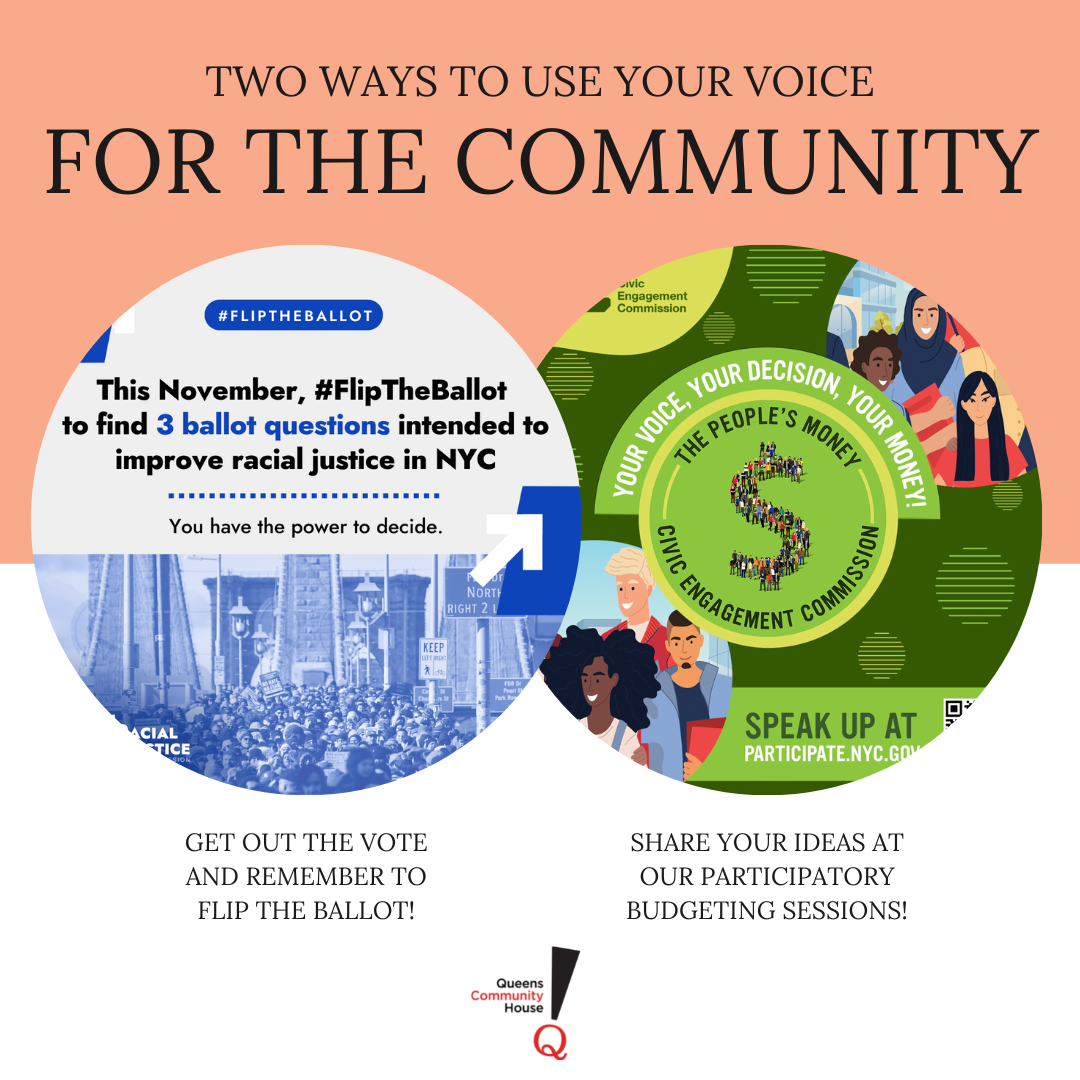
Support Queens Community House
Queens Community House provides individuals and families with the tools to enrich their lives and build healthy, inclusive communities.

City & State: How is the NYC Racial Justice Commission using $5 million to promote the racial equity ballot proposals? | October 2022: New York City voters will see three racial equity proposals on their ballot this November – and they will (hopefully) be informed about them thanks to a $5 million grant from Mayor Eric Adams for the purpose of voter outreach and education. The only question is whether the time window and the outreach effort is sufficient to pass a set of proposals that were created as an answer to the city’s police brutality protests. Three proposals backed by Democratic leaders failed to pass statewide last year, reminding supporters this time that voter approval can’t be taken for granted.
This year, New York City voters will see four ballot proposals on their ballots. One, to approve an environmental bond act, is statewide, while the other three are particular to city voters and focus on improving the way the city addresses racial justice and equity. Last week, the city Racial Justice Commission, which developed the proposals, held one of the first major press events to kick off its voter outreach campaign. It took a long time to get here, three weeks before Election Day. The commission was formed in March 2021, as a charter revision commission, and after a “marathon” of work, the proposals were finalized last December.
In the meantime, state Democrats were pushing three progressive-minded election reform proposals through the Legislature that ultimately failed at the ballot box in November 2021. The ballot proposals would have made changes to the redistricting process to make it more favorable to Democrats and expanded voting access. They were introduced at a time when Republicans across the country were looking to do the opposite and restrict voting access. New York Republicans launched a vigorous opposition campaign that played a large part in defeating the three measures. The combination of a GOP offensive and the lack of any kind of activity from state Democrats seemed to be to blame for its failure.
According to the Board of Elections, an average of 48% voted against the proposals, while only 38% voted in favor and 11% left the questions blank. State Democrats may have been comfortable with the idea that these proposals would pass in deep blue New York. Such comfort was squashed by the GOP campaign which proved to be successful even in Democratic-leaning areas like Albany County. There is, however, less concern with this year’s proposals for the city. The three proposals that failed statewide in 2021 passed by large margins – an average of 22% – in New York City. Conservative-leaning Staten Island was the only borough with nore no votes. And so far, there isn’t any kind of opposition campaign against the racial justice proposals. The proposals stand a good chance of passing, the only question is by how much.
City & State reached out to the Racial Justice Commission to ask for more detail on its voter outreach campaign. At its core, the campaign is focused on utilizing partnerships with community organizations to reach out to voters of color – the demographic that would be most impacted by the proposals. This strategy is also complemented by the traditional paid advertising media plan. “Our community partner organizations have hosted 241 events thus far to educate New Yorkers about the three ballot questions,” said Jessica Guerrasio, communications director for the commission. Some of the community organizations include Queens Community House, the Islamic Circle of North America and League of Asian Americans of New York. The commission also has a calendar on its website detailing all of the community partner outreach events. It’s running TV ads on channels such as PIX11, NY1, SINO and Univision and radio ads on stations reaching a diverse array of communities including 1010 WINS in English, 93.1 Amor in Spanish, Radio Soleil in Haitian Creole and Radio RAMPA in Polish. In addition to print ads and outdoor ads, people can also expect ads in subway and buses, and digital ads online.
Click here for the full article.